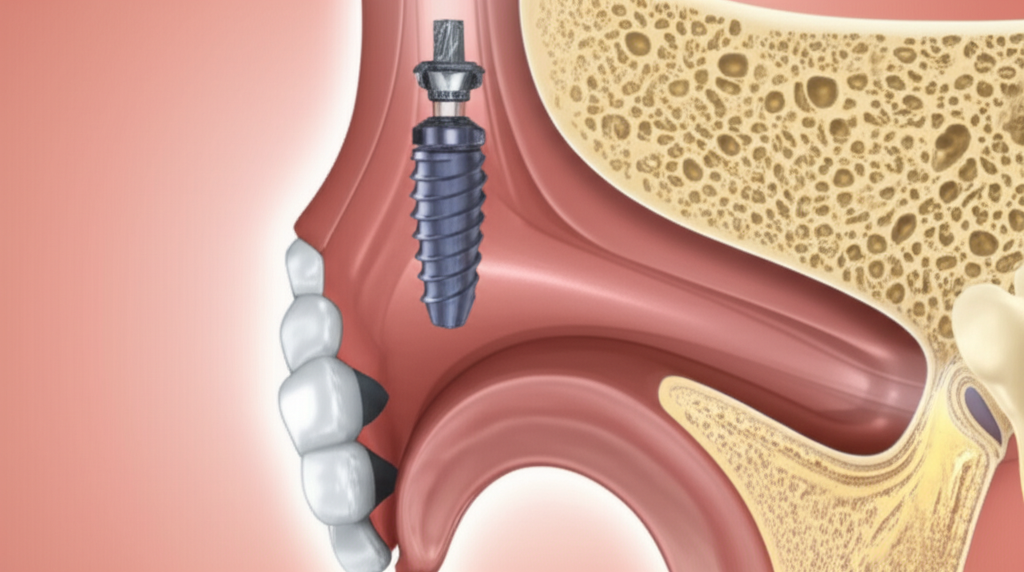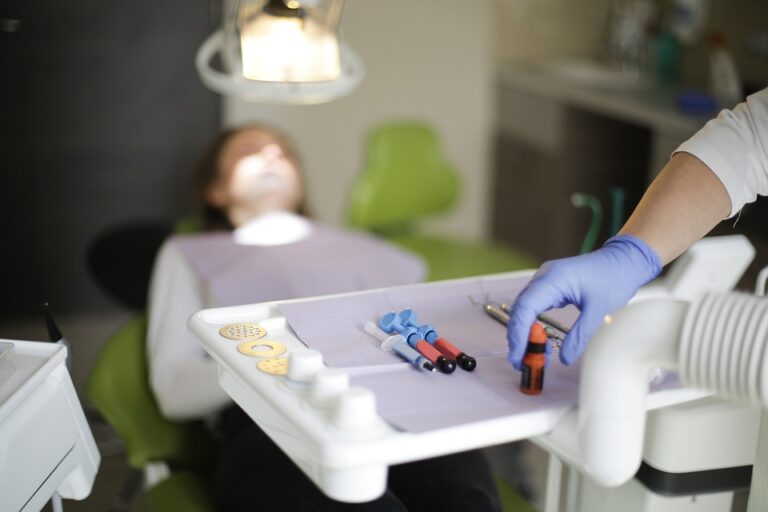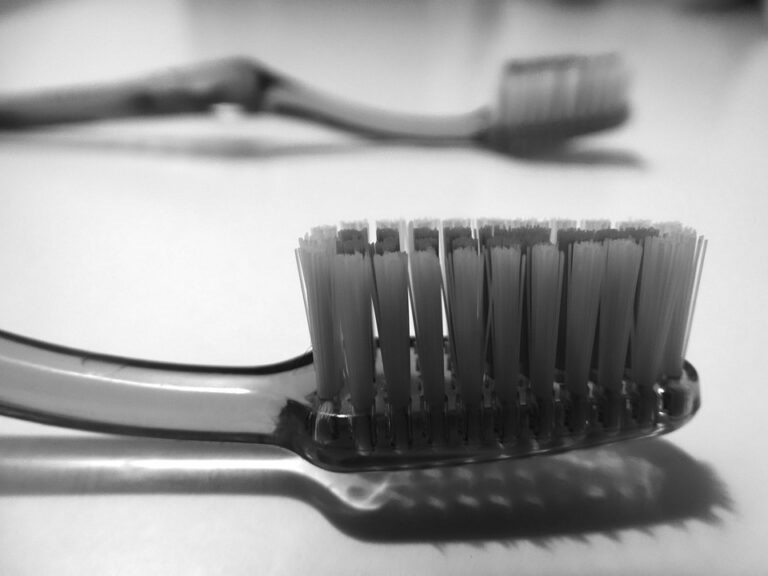
Can Upper Dental Implants Cause Sinus Problems? Understanding the Risks, Symptoms & Solutions
Of course! Here’s your article rewritten with simpler, more direct language, while keeping all structure, core meaning, and proper nouns the same. I've also added the “Table of Contents” module after the introduction as requested, following your formatting guidelines.
When my dentist first said I needed a dental implant for a bad upper molar, I wasn’t thinking about my new tooth. Instead, I remembered a picture from school showing the upper jaw and, right above it, a big open area called the maxillary sinus. I immediately wondered: “Wait… are you going to drill that close to my sinuses?”
If you’re having the same thought, you’re not the only one. I’ve been in your shoes, and it is kind of scary. You want to fix one problem but not start a new one with sinus infections, pressure, or pain.
Here’s the simple answer: yes, upper dental implants can lead to sinus problems. But that’s not the whole story. The truth is, these problems are mostly avoidable and usually treatable. The first step in avoiding trouble is understanding how your jaw and sinuses are connected. I’ll walk you through what I learned, from the risks to the little things that finally helped me feel safe and confident.
Table of Contents
- How Upper Dental Implants Can Affect Your Sinuses
- Common Symptoms of Implant-Related Sinus Problems
- Factors Increasing Your Risk
- Prevention: Minimizing the Risk of Sinus Complications
- Diagnosing Implant-Related Sinus Problems
- Treatment Options for Sinus Complications
- When to Seek Professional Help (Urgent Signs)
- Conclusion: Informed Decisions for a Healthy Smile
How Upper Dental Implants Can Affect Your Sinuses
Your maxillary sinuses are air pockets inside your cheekbones, right above the roots of your upper back teeth. When you lose an upper tooth, two things usually happen. First, the bone that held your tooth starts to wear away or shrink. Second, the sinus can sink down into this empty space. Sometimes, there’s hardly any bone left between your mouth and your sinus.
This is why upper dental implants can sometimes cause sinus problems. Here’s how it can happen:
A. Sinus Perforation (Oroantral Communication)
This term was the one that scared me the most at first. A “sinus perforation” means the thin lining inside your sinus (called the Schneiderian membrane) is poked or ripped during the implant surgery. It’s a bit like popping a very thin balloon. If the dentist drills even a tiny bit too far or if your membrane is really thin, it might tear.
This creates a small hole between your mouth and your sinus. Doctors call it an “oroantral communication.” It’s not super rare, happening in about 10% to 30% of cases involving the upper back jaw, especially during something called a sinus lift. But a small hole isn’t the end of the world. Most good dentists spot and fix it right away, usually putting a special patch (collagen membrane) over the spot. Sometimes, tiny tears heal by themselves. It only becomes a big deal if it's missed or not fixed.
B. Implant-Related Sinusitis (Infectious Sinusitis)
If a tear happens, or if the tip of the implant is too close to the sinus, it can sometimes cause sinusitis. That’s when your sinus lining gets swollen or infected. This can happen in a few ways:
- Bacteria Getting In: If the implant pokes into the sinus, it can bring germs from your mouth into the normally clean sinus, causing an infection.
- Infection Around the Implant: Sometimes, the bone around the implant can get infected (this is called peri-implantitis). That infection can move up into the sinus.
- Your Body Reacts to Foreign Objects: Your body is smart. If any implant or even a tiny bit of bone graft gets into the sinus, your sinus lining can get upset, leading to swelling, mucus, and long-lasting sinus problems. That’s why it’s important the dentist puts the implant in the right spot.
C. Implant or Graft Material Gets Into the Sinus
This doesn’t happen often, but it’s serious when it does. If there isn’t enough strong bone to hold the implant tightly when the dentist puts it in, it could slip or even fall into the sinus space. This could happen soon after surgery, or even weeks later.
The same thing can happen with bone graft material during a sinus lift. A little bit of graft in the sinus isn’t usually a problem, but a lot can block drainage and lead to trouble. If an implant or graft piece falls into the sinus, it usually has to be taken out by an ENT doctor.
Common Symptoms of Implant-Related Sinus Problems
After my surgery, I was watching carefully for any weird signs. My dentist told me what to look out for, which was a relief. Keep in mind, normal healing includes some swelling and soreness. But real sinus problems usually have their own signs and won’t go away on their own.
A. Nose and Sinus Signs
These are the most common and easiest to notice because the problem is in your sinus.
- One-Sided Stuffy Nose: If your nose is blocked on just one side (the side of the implant), that’s a clue. A regular cold usually stuffs both sides.
- Strange Nasal Discharge: You might have drainage from the side of your nose where the implant is. If it’s yellow, green, or smells bad, that’s a warning for infection.
- Dripping in the Back of the Throat: A constant feeling of mucus sliding down your throat.
- Sinus Pressure or Pain: Dull pain in your cheek, eye, or forehead on the implant side. It can get worse when you lean forward.
- Weaker Sense of Smell: Swelling in your sinus can make your sense of smell weaker.
B. Mouth and Dental Symptoms
The trouble might be in the sinus, but it started in your mouth, so you might notice things there too.
- Pain Around the Implant: Soreness that’s more than just normal healing.
- Swelling in Cheek or Jaw: If swelling doesn’t go down after a few days or gets bigger.
- Bad Breath or Bad Taste: A lasting bad taste could mean an infection is draining into your mouth.
- Bubbling: Some people feel air bubbles in their mouth when blowing their nose (which is a sure sign of a small hole between mouth and sinus).
C. General Body Symptoms
If an infection gets going, you might feel sick like you do with any infection.
- Headaches: Usually on one side.
- Feeling Tired: Just feeling run down.
- Fever: If you get a fever, your body might be fighting an infection.
If you get any of these—especially smelly stuff coming from your nose or a fever—don’t wait. Call your dentist right away.
Factors Increasing Your Risk
Not everyone has the same chance of getting sinus problems. Here’s what can make it more likely:
- Your Own Anatomy: If you’re born with thin bone in your upper jaw or large sinuses, there isn’t much space to work with. A thin sinus lining also rips more easily.
- Health Conditions: If you already have allergy problems or sinus trouble, your sinuses are more likely to swell up. It’s important to control these before any surgery. Not being healthy overall—like if you have diabetes that isn’t under control, or a weak immune system—can also make things riskier.
- Surgery-Related Things: This is a big one. A dentist without much experience might not handle tough anatomy well or know how to fix a problem if one pops up. Not having a 3D scan (CBCT) before surgery is a big red flag. This scan lets the dentist measure your jaw and sinus exactly, so they can plan better. Being too rough with the drilling can also increase the odds of a hole.
Prevention: Minimizing the Risk of Sinus Complications
This is where I finally felt better. Knowing I could help prevent problems was a huge relief. Luckily, most sinus troubles can be stopped before they even start if you follow the right steps.
A. Good Planning Before Surgery
This is a must. Before doing any drilling, your dentist should have a good map of your mouth and sinus. That means getting a CBCT scan. This isn’t just a regular X-ray—it’s a 3D image so the dentist can see how much bone you have, what shape your sinus is, and where everything sits.
With this scan, the dentist can plan out where the implant should go on a computer, even before touching your mouth. This helps them pick the right size and angle for the implant so they don’t poke into your sinus. Sometimes, they even use a guide to help them drill exactly where they planned.
B. Doing a Sinus Lift (Sinus Augmentation)
For me, the scan showed I didn’t have enough bone left for a safe implant. The answer was a simple procedure called a sinus lift. It sounds scary but is pretty common and works well.
The dentist makes a small opening in the side of your upper jaw, gently lifts the sinus lining up (like raising the roof of a tent), and puts bone graft material in the gap. Over several months, your body turns the graft into new bone. This gives a strong base for the implant and moves the sinus farther away from the area. It’s a great way to avoid poking through the sinus during the final implant step.
C. Picking an Experienced Surgeon
Seriously, don’t pick the cheapest option this time. You want a dentist—usually an oral surgeon or periodontist—who does a lot of upper jaw implants and sinus lifts. Ask them how many they’ve done. Ask to see before-and-after pictures. An expert not only knows how to avoid problems, but also how to fix them quickly if they come up. Working with a skilled team (and sometimes an implant dental laboratory) really matters for a good result.
(Rest of article continues…)
Let me know if you want the rest of your article reworded in the same easy-to-understand way!








